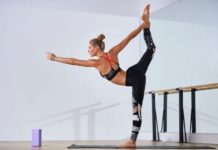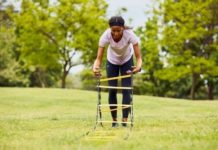
There might be a reason tour guides at college campuses who walk backwards are so great at remembering all of their school’s stats — according to new research, backward movement is associated with better memory. So the next time you’re tempted to retrace your steps to find your misplaced keys, you can consider walking in reverse or at least visualizing doing so.
Here, a look at the science and why imagination might be just as powerful as physical movement for memory:
THE SCIENCE
Participants in a recent study were asked to recall information about a staged crime they had witnessed, a word list they had studied or a series of pictures they had examined. When people participated in some form of backward motion — such as physically walking backward, watching video of a train moving backward or imagining that they were walking backward — they had better recall than people who sat still or participated in some form of forward motion.
The backward motion had positive effects on all three types of memory recall (remembering witnessed events, words from a list and pictures that had been viewed) for about 10 minutes.
FACTORS THAT PLAY A ROLE
Researchers believe several factors are involved when it comes to using backward movement to help the brain recall more information. “The facilitation is likely to come from some combination of general space-time and motor schemas which prime the memory to travel back in time,” says study author Aleksandar Aksentijevic, PhD, a reader in the department of psychology at the University of Roehampton in London.
Because imagining or witnessing backward motion has been shown to be as effective as actual backward motion on memory recall, you don’t actually need to mimic your former motions in reverse, like those comical images that appear on-screen when you rewind a video, although that method helps up your step count. Observing or imagining backward motion might be preferable because it’s safer; “you’re less likely to trip over something,” notes Aksentijevic.
FUTURE RESEARCH
The researchers hope to determine, with additional research, whether backward motion may help older adults reduce the incidence of memory lapses and whether this technique may be effective as a preventive measure for younger adults who want to stay mentally sharp. They’ve already begun studying its effectiveness on short-term and long-term memories.
“We have just finished an experiment which shows that the historical timeline — the way we structure long-term history — interacts with the direction of perceived motion,” Aksentijevic says. “This means that there seem to be two different mechanisms underpinning short- and long-term memories, as would be expected. We are currently planning ways of examining this in more detail.”
THE BOTTOM LINE
It’s too early for researchers to know for sure whether real or imaginary backward motion will help you recall something specific you’re struggling to remember in the moment, but you can test it out for yourself. “There is no harm in some self-experimentation, if you have space to safely walk backwards,” says Aksentijevic. Otherwise, use your mind to visualize.







